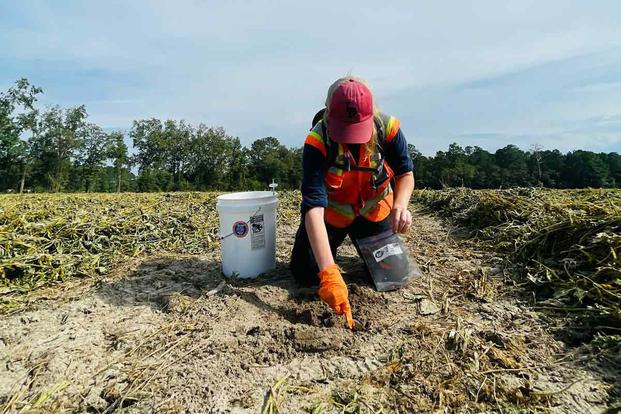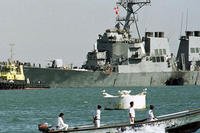Nearly a month after an F-35B Lightning II jet crashed in eastern South Carolina, the military has finished recovering the aircraft and cleaning up the area, according to officials.
On Sept. 17, a pilot ejected from the jet after what he described as an "aircraft failure" in a 911 call to emergency authorities. The pilot descended roughly 2,000 feet after ejecting from the nearly $100 million aircraft, landing in a local resident's backyard, according to the call.
The ejection was followed by a daylong search for the aircraft, prompting Joint Base Charleston to ask the public for help locating the jet. The crash also prompted a two-day aviation safety stand-down from the top Marine Corps officer, Gen. Eric Smith.
Read Next: USS Lake Erie Commander Fired Due to Performance Issues, Navy Says
Now, after weeks of cleanup in the warm early fall South Carolina weather, officials said that "recovery and environmental remediation operations" have been successfully concluded.
"It is purposeful, sometimes tedious work," Sarah Murtagh, a Navy on-scene coordinator, said in a press release from the Navy Region Southeast on Wednesday. "I hope that the thorough job of removing contaminants we have done here underscores the Navy and Marine Corps commitment to ensuring the safety and environmental integrity of this beautiful area."
The wreckage was discovered in Indiantown, South Carolina, where officials said they discovered a "debris field" more than 24 hours after the jet was initially reported missing.
What was left of the aircraft was transported to Marine Corps Air Station Beaufort, though a spokesperson for the 2nd Marine Aviation Wing, to which the jet belonged to, declined to give an update on the status of the jet Friday, as an investigation is ongoing.
The cleanup team, which included sailors and Marines, focused on environmental cleanup and "remediation of the land" in the wake of the crash. The Navy intends for the area to be clear of contaminants and viable for growth.
"Soil sampling confirms the effectiveness of our cleanup efforts," Murtagh said. "While the natural vegetation may take some time to regrow, we mitigate the impacts by helping the land recover as quickly as feasible."
The cleanup team removed damaged or affected crops, underbrush and trees, according to the press release. Representatives from the Navy will continue meeting with local residents to "discuss any emerging needs or concerns," officials said.
"The patience and understanding of the local residents has played a crucial role in our success," Murtagh said. "On behalf of the entire team here, we extend our heartfelt thanks to the wonderful people of Williamsburg County."
The Navy Region Southeast On-Scene Coordinator program is based out of Naval Air Station Jacksonville, Florida. They started working to clear the field on Sept. 19.
The F-35 belonged to Fighter Attack Training Squadron 501 of Marine Aircraft Group 31, 2nd Marine Aircraft Wing. MAG-31, as the group is known, is based out of Marine Corps Air Station Beaufort, where the wreckage was transported to.
After the jet went missing, open-source flight radar showed a state law enforcement helicopter, Civil Air Patrol Cessnas and a Navy Beechcraft UC-12M Huron scouring the area near Indiantown, two hours north of Joint Base Charleston.
-- Drew F. Lawrence can be reached at drew.lawrence@military.com. Follow him on X @df_lawrence.
Related: After Daylong Search, Likely F-35 Debris Found After Jet Went Missing in South Carolina














